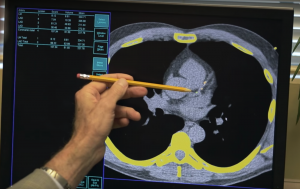 The first study of CT coronary angiography (CTCA) in Indigenous Australians has found that they are three times more likely to have a higher burden of coronary artery calcium than non-Indigenous patients.
The first study of CT coronary angiography (CTCA) in Indigenous Australians has found that they are three times more likely to have a higher burden of coronary artery calcium than non-Indigenous patients.
Carried out at Wagga Wagga Hospital in rural NSW, the observational study compared CTCA results for 66 Indigenous and 1275 non-Indigenous patients who were referred for assessment for coronary artery disease between 2012 and 2017.
Of the 66 patients who identified as Indigenous, 41 (62%) had a calcium score of 0.
The remaining patients had calcium scores ranging from 1 to 1,256, and a median score of 48. For non-Indigenous patients, calcium scores were in a range 0–7,219 and median score of 11.
In multivariate analysis, there was a significant correlation between Indigenous status and calcium score (Odds Ratio 2.76) after accounting for the risk factors such as age, hypertension, diabetes, hypercholesterolaemia and smoking history.
Indigenous patients with a calcium score of zero did not have any significant stenoses identified on the coronary angiogram component of their scan, and would have a very low risk of major cardiac event (estimated 0.13% annual rate).
However those with a calcium score tended to have a higher burden than non-Indigenous people who were assessed, and this reflected the much higher rates of CHD seen in previous studies of Indigenous people, the study investigators said.
They noted that Indigenous people accounted for about 5% of people referred for CTCA, which was similar to the proportion of Indigenous people in the local population (4%).
“The burden of coronary artery disease in the Indigenous population is, however, much higher than in the general population, and we would therefore expect that a higher percentage of patients would be of Indigenous background,” they wrote in Heart Lung and Circulation.
“Perhaps the access gap therefore still persists in this population, however CTCA as a one time, non-invasive test, makes it more accessible to a disadvantaged, geographically isolated population that other investigations.
“In light of recent evidence for the cardiovascular mortality benefit of CTCA, access to CTCA for Indigenous Australians presents an opportunity to identify those patients who have early cardiovascular disease and engage them in aggressive risk factor modification to reduce the rate of myocardial infarction and early mortality in this population,” they concluded.